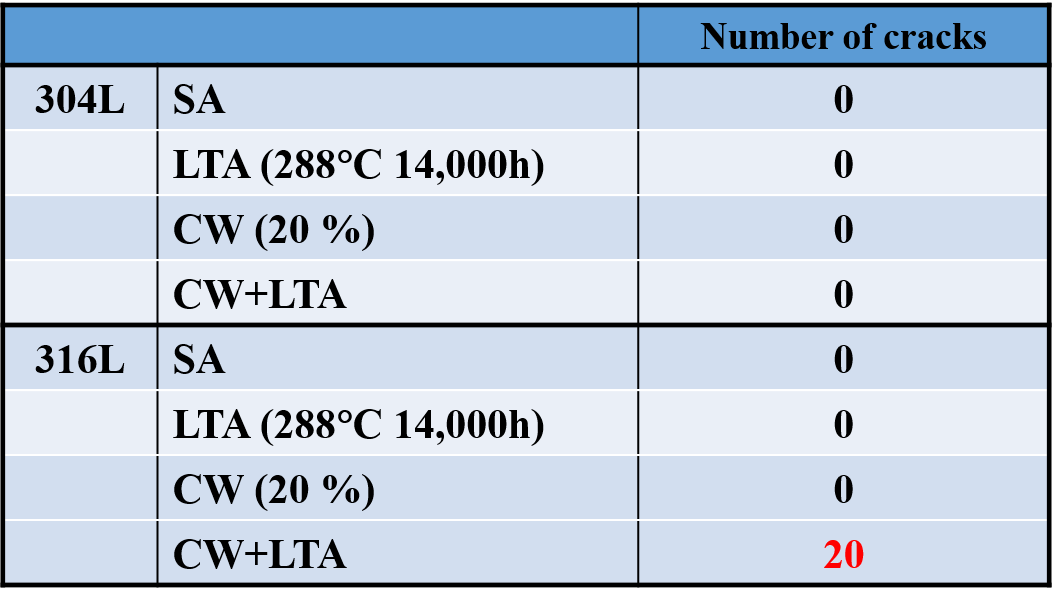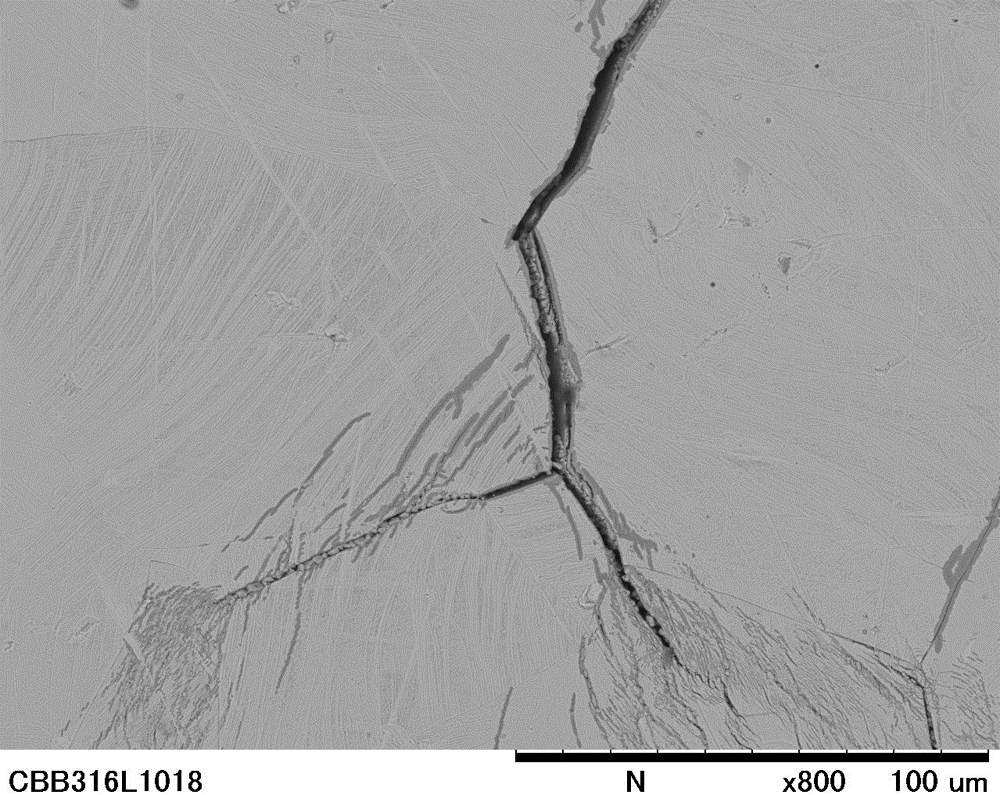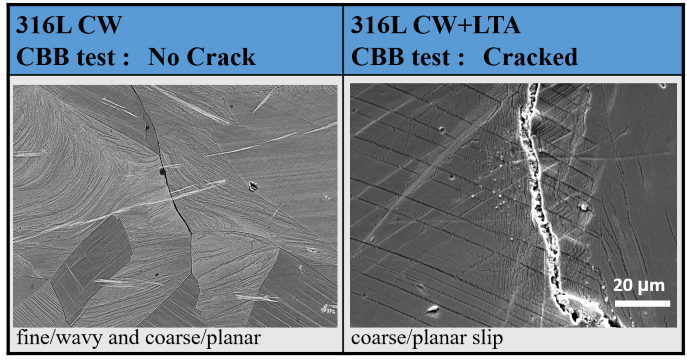
With the increasing interest in the life time extension of components in light water reactor (LWR) with maintaining the safe and reliable operation, countermeasure to Stress Corrosion Cracking (SCC) on stainless steels is one of the most important subjects among aging degradations. In recent years, intergranular SCC (IGSCC) incidents have been reported in low carbon austenitic stainless steels used in commercial boiling water reactor (BWR) components operating for more than 10 years, where the neutron irradiation damage was negligibly small. In spite of extensive studies on SCC in low carbon stainless steels, however, that mechanism has not been fully understood yet.
The long-term, such as several years, exposure of materials at the LWR operation temperature has a possibility to cause changes in microstructure and microchemistry at the grain boundaries which induce the increase in the SCC susceptibility.
Specimens used in this study were low carbon austenitic stainless steels (SSs), Types 304L and 316L. Both steels were cold worked to 20 % thickness reduction (CW) followed by long-term thermal aging at 288 ℃ for 14,000 h (LTA). Creviced Bent Beam (CBB) testing was carried out to estimate the SCC initiation susceptibility under simulated BWR water conditions at 288 ℃ for 1,000 h.
The number of SCC cracks observed on the specimen after the CBB test for 1,000 h is shown in Fig. 1. SEM observation photograph of a typical SCC crack in this CBB test (Type 316L CW+LTA) is shown in Fig. 2. The SCC initiation susceptibility of Type 316L SS increased clearly by the combination of the cold work and the long-term thermal aging, however, such synergistic effect was not observed in Type 304L SS.

Fig. 1 Number of SCC cracks observed on the specimen after the CBB test

Fig. 2 SEM observation photograph of a typical SCC crack in this CBB test (316L CW + LTA)
The typical surface morphology of 316L CW and CW + LTA specimens after the CBB test observed by means of SEM is shown in Fig.3. Both grains with fine wavy slip and course planar slip coexisted in the surface of CBB-tested 316L CW. On the other hand, the slip line pattern of 316L CW + LTA, which was the only material exhibited the SCC susceptibility in this study, was mainly characterized by coarse and planar. That result could be suggested that the deformation microstructure in 316L was changed after the LTA treatment.

Fig. 3 SEM observation photographs of typical surface morphology of 316L after the CBB test
To understand these results, evaluations on the changes of microchemistry, microstructure and mechanical properties induced by the CW and LTA treatment have been performed, and their correlation with the SCC initiation susceptibility is being considered.